Special Report
The Price of This Household Item Is Falling, According to the Government
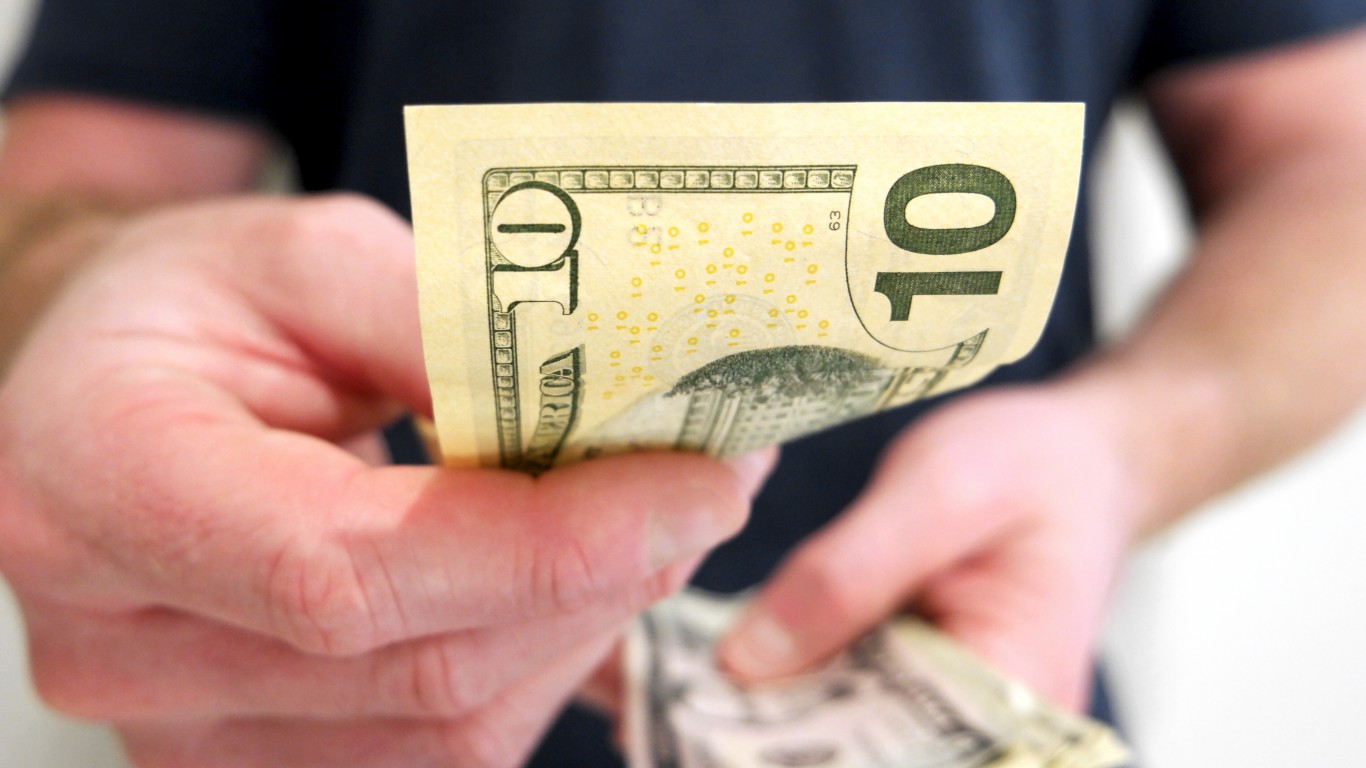
Published:

Is the rate of inflation rising or falling? Good question. The January consumer price index, a closely watched measure of inflation, was not encouraging. After several months in which the pace of increase in prices cooled, the CPI rose 6.4% year over year, only a slight decline from the previous month’s 6.5% rate. Further, compared to December, the CPI rose by 0.5%. Energy prices, which were more stable for months, surged again as did the prices of many other items. The price of smartphones, however, fell.
Inflation is often seen as tied to rising interest rates because the Federal Reserve tends to raise rates to combat inflation, and that has been the story for a year. As inflation rates rose above 8% year over year, the Fed took the route it usually does under these circumstances. It increased interest rates to dampen economic activity. (Here are countries with the lowest gas prices in the world at the start of 2023.)
Up until the January CPI, the rate hikes appeared to be working. Following the significant interest rate hikes last year, the Fed’s leadership said it would take its foot off the interest rate pedal. With the recent CPI report and retail sales rebounding in January, the Fed may continue on its previous course. (Here is the price of a dozen eggs every year since 1973.)
There are some price soft spots in the economy, although they are rare. 24/7 Wall St. reviewed the BLS’ Consumer Price Index Summary January report to find the items that have declined in price in January 2023 compared to January 2022. The prices of only 17 items among the dozens considered in the CPI fell last month.
Smartphones topped this list of falling prices as they have for several months. These dropped 23% year over year. But smartphones and some other such products are special cases.
The CPI generally compares similar items, large eggs to large eggs for example. Smartphones, however, keep improving, and the newest models are often better versions of the previous year’s models. To reflect the technology improvements (better screen resolution for example), the BLS implements quality adjustments, discounting previous models to reflect their lower value. The drop in the CPI for smartphones, therefore, does not necessarily suggest that prices of smartphones are 23% lower than they were last year, but that the new smartphones provide 23% more value.
Click here to see the price of this household item is falling, according to the government.

17. Recreational books
> Price increase, January 2022 to January 2023: -0.3%
[in-text-ad]

16. Services by other medical professionals
> Price increase, January 2022 to January 2023: -0.4%
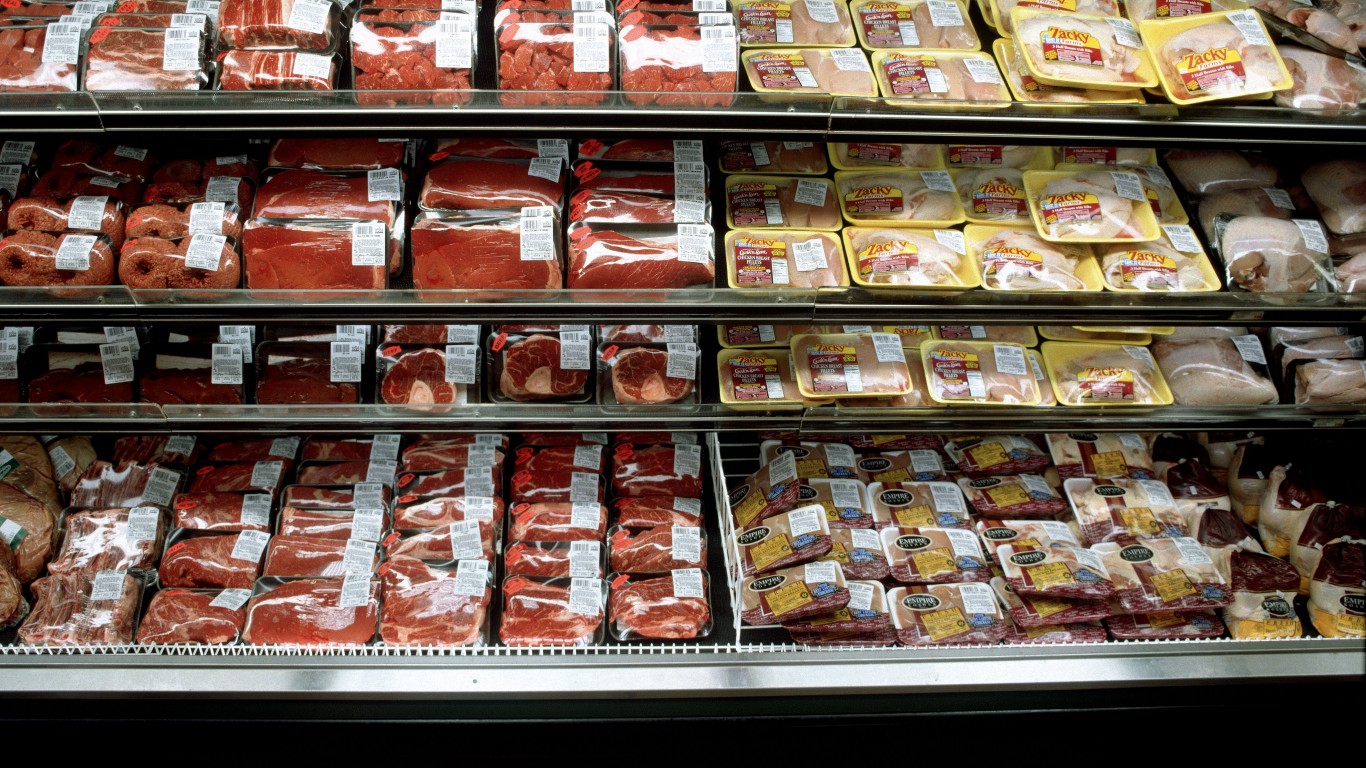
15. Uncooked beef roasts
> Price increase, January 2022 to January 2023: -0.5%
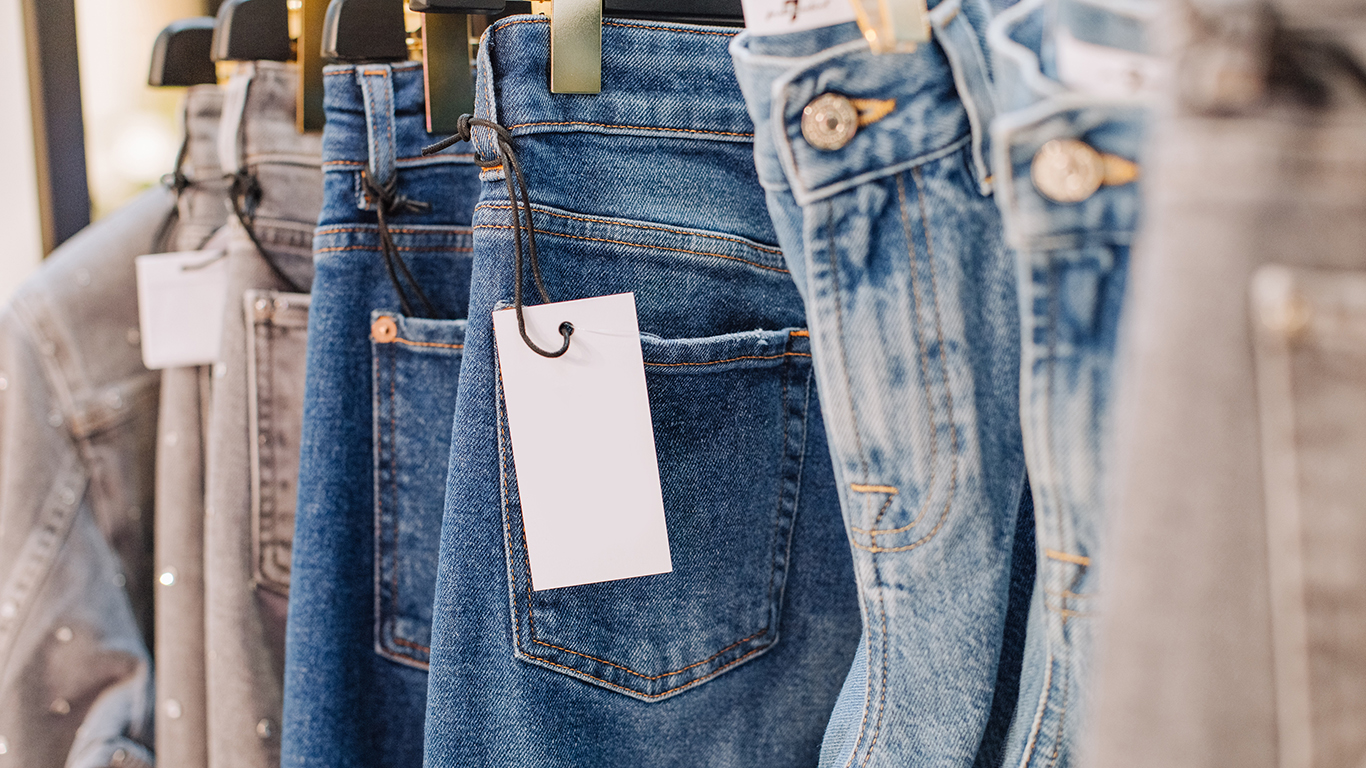
14. Boys’ apparel
> Price increase, January 2022 to January 2023: -1.0%
[in-text-ad-2]

13. Ship fare
> Price increase, January 2022 to January 2023: -1.9%

12. Transportation commodities less motor fuel
> Price increase, January 2022 to January 2023: -2.3%
[in-text-ad]

11. Computer software and accessories
> Price increase, January 2022 to January 2023: -2.9%
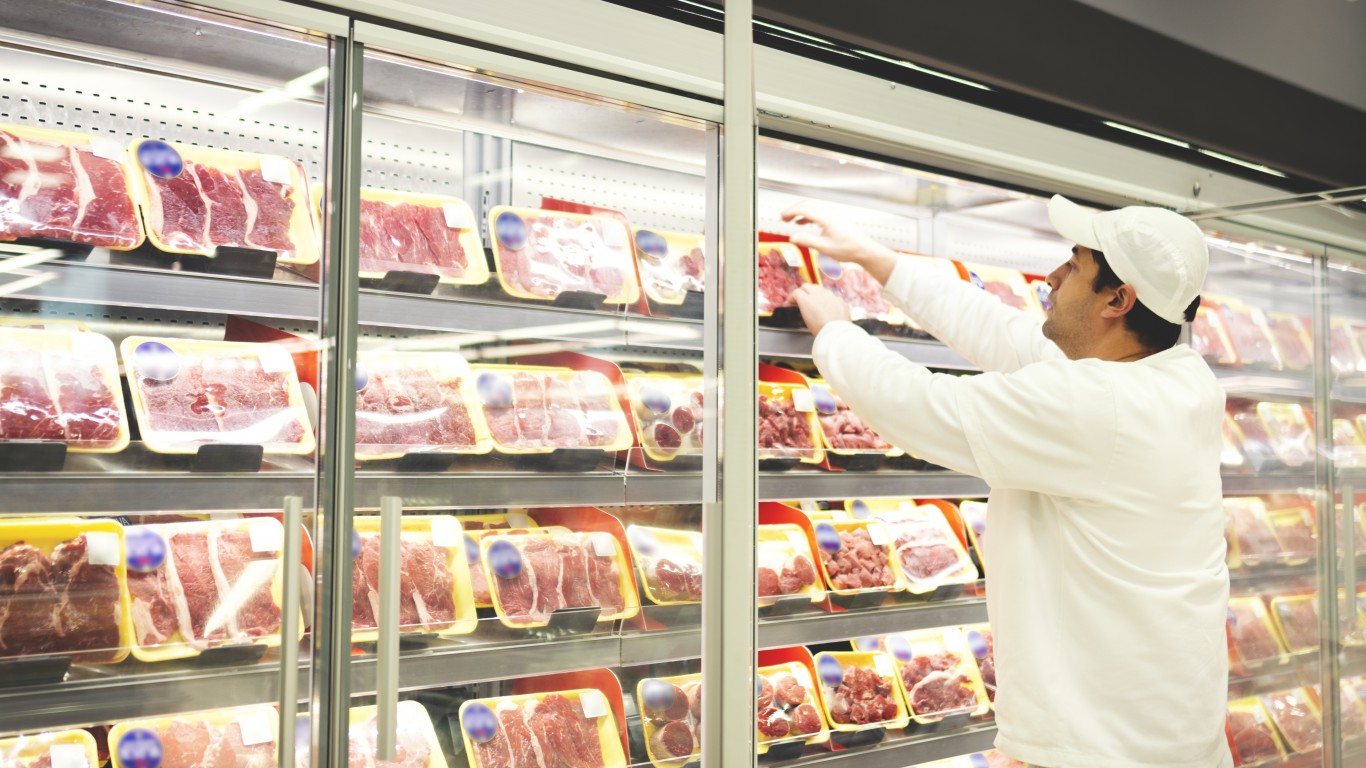
10. Uncooked beef steaks
> Price increase, January 2022 to January 2023: -3.0%
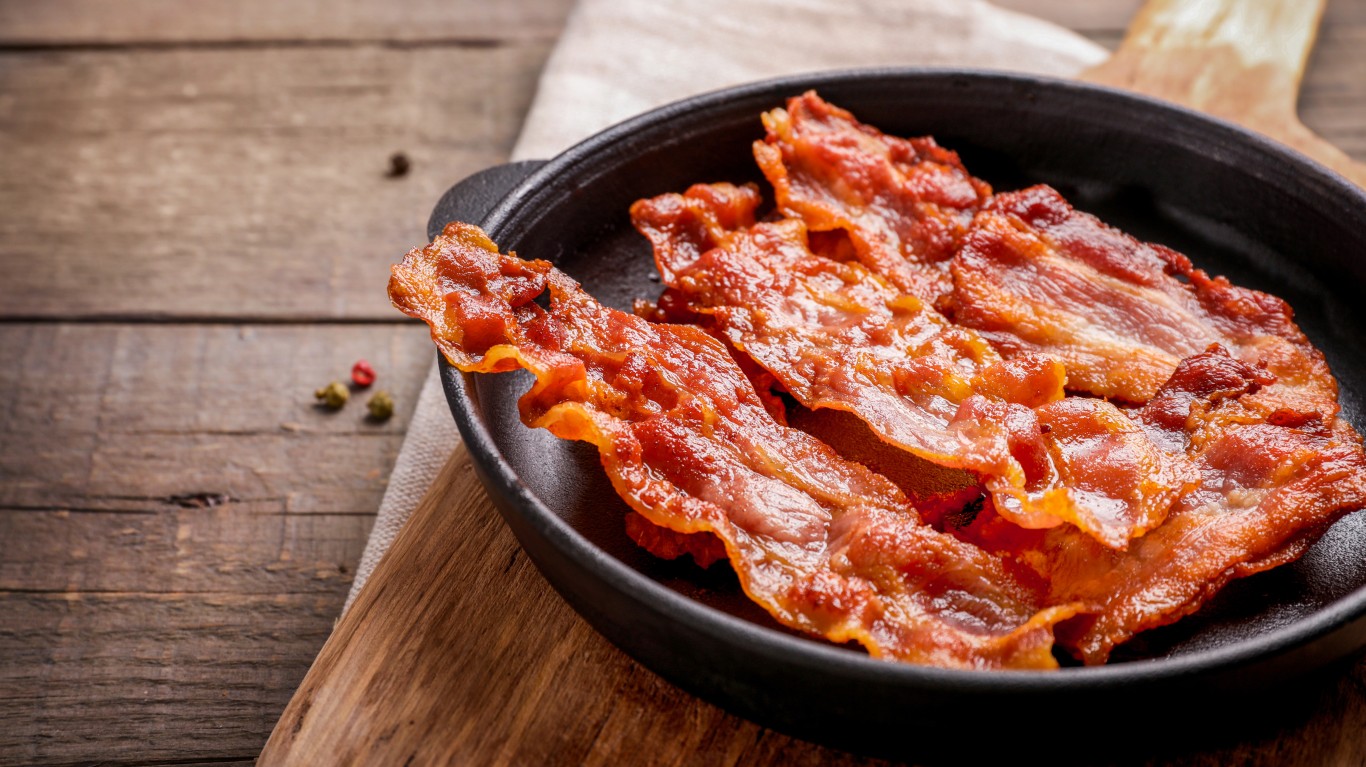
9. Bacon and related products
> Price increase, January 2022 to January 2023: -3.9%
[in-text-ad-2]

8. Women’s outerwear
> Price increase, January 2022 to January 2023: -4.0%

7. Women’s dresses
> Price increase, January 2022 to January 2023: -4.2%
[in-text-ad]

6. Computers, peripherals, and smart home assistants
> Price increase, January 2022 to January 2023: -6.2%

5. Education and communication commodities
> Price increase, January 2022 to January 2023: -10.3%

4. Used cars and trucks
> Price increase, January 2022 to January 2023: -11.6%
[in-text-ad-2]

3. Televisions
> Price increase, January 2022 to January 2023: -13.2%

2. Telephone hardware, calculators, and other consumer information items
> Price increase, January 2022 to January 2023: -17.4%
[in-text-ad]
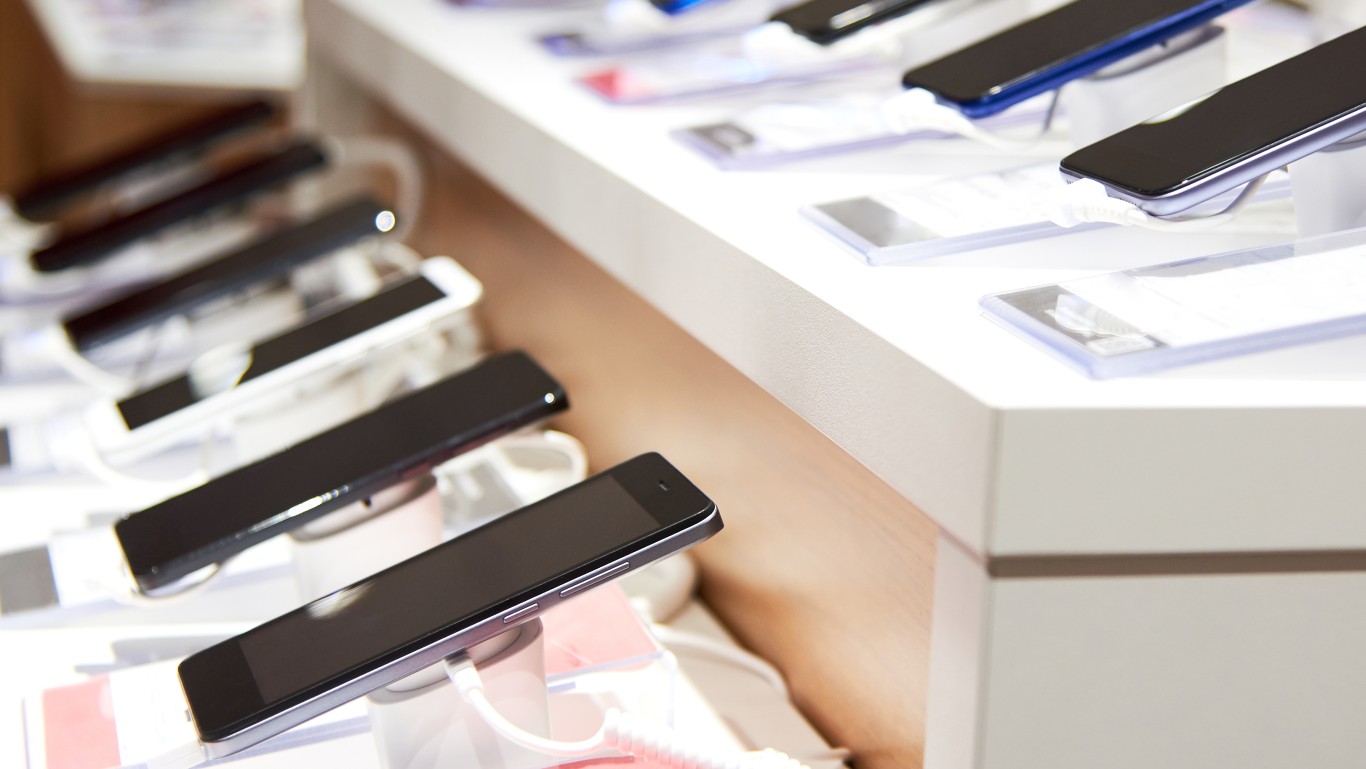
1. Smartphones
> Price increase, January 2022 to January 2023: -23.9%
If you’re like many Americans and keep your money ‘safe’ in a checking or savings account, think again. The average yield on a savings account is a paltry .4% today, and inflation is much higher. Checking accounts are even worse.
Every day you don’t move to a high-yield savings account that beats inflation, you lose more and more value.
But there is good news. To win qualified customers, some accounts are paying 9-10x this national average. That’s an incredible way to keep your money safe, and get paid at the same time. Our top pick for high yield savings accounts includes other one time cash bonuses, and is FDIC insured.
Click here to see how much more you could be earning on your savings today. It takes just a few minutes and your money could be working for you.
Thank you for reading! Have some feedback for us?
Contact the 24/7 Wall St. editorial team.